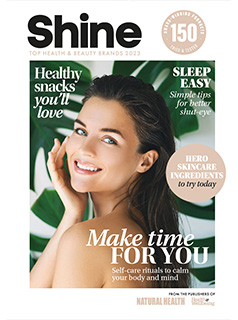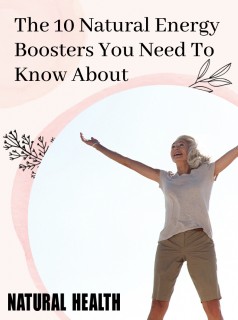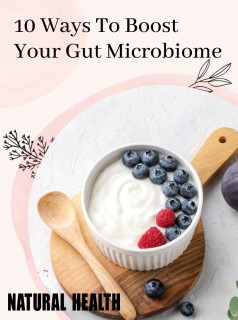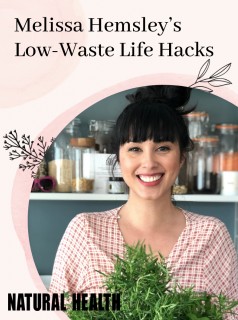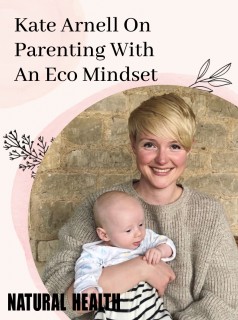You thought all those fresh fruit smoothies and daily apples and pears were supercharging your health? Think again, says Jane Alexander.
You thought all those fresh fruit smoothies and daily apples and pears were supercharging your health? Think again, says Jane Alexander.fructose malabsorption (FM), those five a day could be causing bloating and stomach pains, fatigue and confusion, depression and anxiety and even sore, aching eyes.
Actually, he explained, it’s not fruit per se, but the fructose that fruit contains. Fructose is a simple sugar (a monosaccharide) which is found mainly as free fructose in fruits and honey or as fructan (chains of fructose molecules) in some vegetables nd also, surprisingly, in wheat.
Normally these sugars would be processed in the small intestine but, for people with FM, they pass largely unchanged into the large intestine where they wreak havoc.
“The sugars stay in the bowel and produce hydrogen or methane gas – hence the pain and gassiness,” explains nutritional therapist and lecturer Emma Wells, one of the few people in the UK so far to pay attention to this little-known condition. She finds that a large proportion of her clients with IBS or chronic fatigue will have problems with fructose.
Dietician Sue Shepherd and Professor Peter Gibson, a gastroenterologist at Box Hill Hospital in Victoria, Australia, looked at the problem of fructose malabsorption in people with Irritable Bowel Syndrome (IBS). “One in three adults with symptoms of IBS are unable to absorb a fructose load of 25 to 50g and, therefore, have fructose malabsorption,” Sue Shepherd explains.
One in three adults with symptoms of IBS suffer from fructose malabsorption.
She also noted that, surprisingly, doctors don’t end to address the problem, even when treating IBS patients. “Fructose malabsorption may be considered uncommon and as such a separate disease, distinct from IBS,” she explains. “Also fructose malabsorption is not specific to patients with IBS but the response to fructose is exaggerated in patients with IBS compared to those without.”
So the condition was – and still is – frequently undiagnosed. Even if doctors did know about FM and could diagnose it, there were no available guidelines on diet that they could give their patients. Sue Shepherd points out that a totally fructose-free diet would be ‘unfeasible’ and make life pretty miserable for people. “Total removal of fructose from the diet would be a nigh impossible task because of its abundant presence in our food supply,” she says.
However, fortunately, her research showed that total removal might not be necessary. “Not every food that contains fructose is a problem for people with fructose malabsorption,” she says. “It is important to understand how fructose occurs in foods to know which foods are a problem.”
It transpires that not all fruit is the foe of the fructose malabsorber. The key lies not just in how much fructose there is in a food, but how much glucose. The balance between the two sugars is critical, with glucose acting as a support network for fructose. So, someone with FM would probably need to cut out apples, pears and melon but could eat oranges, strawberries and pineapple.
“Although restriction of certain foods was critical to the success of the diet, positive food choices were an integral part,” says Sue. “Foods that contain sucrose, or glucose in equal amounts to fructose, were not considered problematicbecause fructose is not malabsorbed in the presence of glucose (in normal food servings).”
So, the good news is that the right diet can effectively switch off FM – and you don’t even need to avoid all fruit all the time. Shepherd’s findings, published in the Journal of the American Dietetic Association, found that avoiding foods particularly high in fructose (and correspondingly low in glucose) helped the majority of sufferers. Her website gives details on FM and also introduces her special diet plan for IBS sufferers (known as the low FODMAP diet plan).
“An estimated 30 to 35 percent of the population suffer with the conditions”
Dr Stossier, however, tends to recommend an initial period during which you avoid all fructose before gradually reintroducing low fructose foods. It’s harder to follow but can have impressively swift results as all potentially problematic foods are eliminated at once.
The fructose/gut relationship makes perfect sense when thinking about purely physiological conditions, such as IBS but how on earth canfructose malabsorption possibly affect our mood? Dr Stossier explains that FM affects levels of the amino acid tryptophan, a precursor of serotonin, one of the major hormones that regulate mood and sleep. Many people, he says, are taking antidepressants quite unnecessarily when really they simply need to change their diet.
Part of me wants to shout from the rooftops for more awareness of FM. Butthe other part winces at the thought of yet another trendy intolerance making dinner parties even more difficult.
Dr Frankie Phillips of the British Dietetic Association equally dreads another faddy bandwagon. While conceding that “a minority of people may be fructose malabsorping” she insists that, “for most people, eating fruit makes a significant positive contribution to the diet. In fact, most of us probably don’t eat enough.”
For me, however, the proof of the pudding was in the not eating. After just a couple of weeks without fructose overload the world became a clearer, brighter and undoubtedly more fragrant place.
Case study
Emma Wills finds the fruit malabsorption guidelines enormously helpful when treating 65-year-old Janet Duffy from Brighton
Janet visited Emma complaining of symptoms including IBS, fatigue, sugar cravings, nausea and diarrhoea. She suffered bloating in the lower abdomen shortly after eating and had excessive flatulence about six hours after eating. She also had offensive smelling wind that was so embarrassing that she wouldn’t go out to socialise.
“I felt she had fructose malabsorption, alongside leaky gut which was leading to other food intolerances,” says Emma. “So she followed the Shepherd regime and also took supplements to help heal the gut.” Much to Janet’s delight and profound relief, the diarrhoea cleared up quickly and, by the third week, her wind problem had pretty much disappeared, as had the bloating. “As with all clients with FM there is usually a period of trial and error,” says Emma. “We need to work out which foods are the most upsetting and what amounts are tolerated. A small amount of a problem food can be okay but a larger portion can cause problems. As with many clients Janet chose to stay in a place where she was eating some fruit but was aware of the consequences and knew what her limits were.”
Have you got fructose malabsoption?
Typical symptoms include:
bloating
diarrhoea and/or constipation
flatulence
stomach pain
aching eyesbr>
fuzzy head
fatigue
depression
anxiety
FM can be diagnosed by a hydrogen breath test (expensive and timeconsuming) but many nutritional therapists prefer to rely on a case history and use an elimination diet to test out the diagnosis.
What should you eat. what should you avoid?
According to Susan Shepherd’s research you need to cut out foods which are high in free fructose or fructans. You can eat fruit – providing its glucose content is in balance with, or in excess, of its fructose content.
Foods you should avoid
Apples, pears, guava, melon and watermelon, quince, papaya, lychees, cherries, grapes
All dried fruits and dried fruit bars
All fruit juices, fruit concentrate
High fructose corn syrup
Honey
Coconut milk and cream
Vegetables: onions (including spring onions and shallots), leeks, asparagus, artichokes, Jerusalem and globe artichokes, chicory, radicchio, endives
Grains: wheat (bread, pasta, sauces, beer, cakes etc)
Fruit sauces and chutneys (including tomato and BBQ sauce)
Artificial sweeteners Sorbitol, Xylitol, Mannitol etc (ie all those which end in ‘ol’)
Sweets and sweetened soft drinks (in excess)
Sweet wines
More info
Dr Harald Stossier practises at Viva Mayr in Austria but makes frequent visits to London where he practises at various clinics. See viva-mayr.com for details.
Emma Wells practises in Brighton and London: smartnutrition.co.uk
For more information on Sue Shepherd’s work (and her information sheets on IBS and fructose malabsorption) see shepherdworks.com.au
Article by
Jane Alexander
Holistic Health Expert
Jane Alexander is the author of over twenty books on natural health and holistic living, including the bestselling Spirit of the Home and The Detox Plan.
Discover more
Article by
Jane Alexander
Holistic Health Expert
Jane Alexander is the author of over twenty books on natural health and holistic living, including the bestselling Spirit of the Home and The Detox Plan.
Discover more






